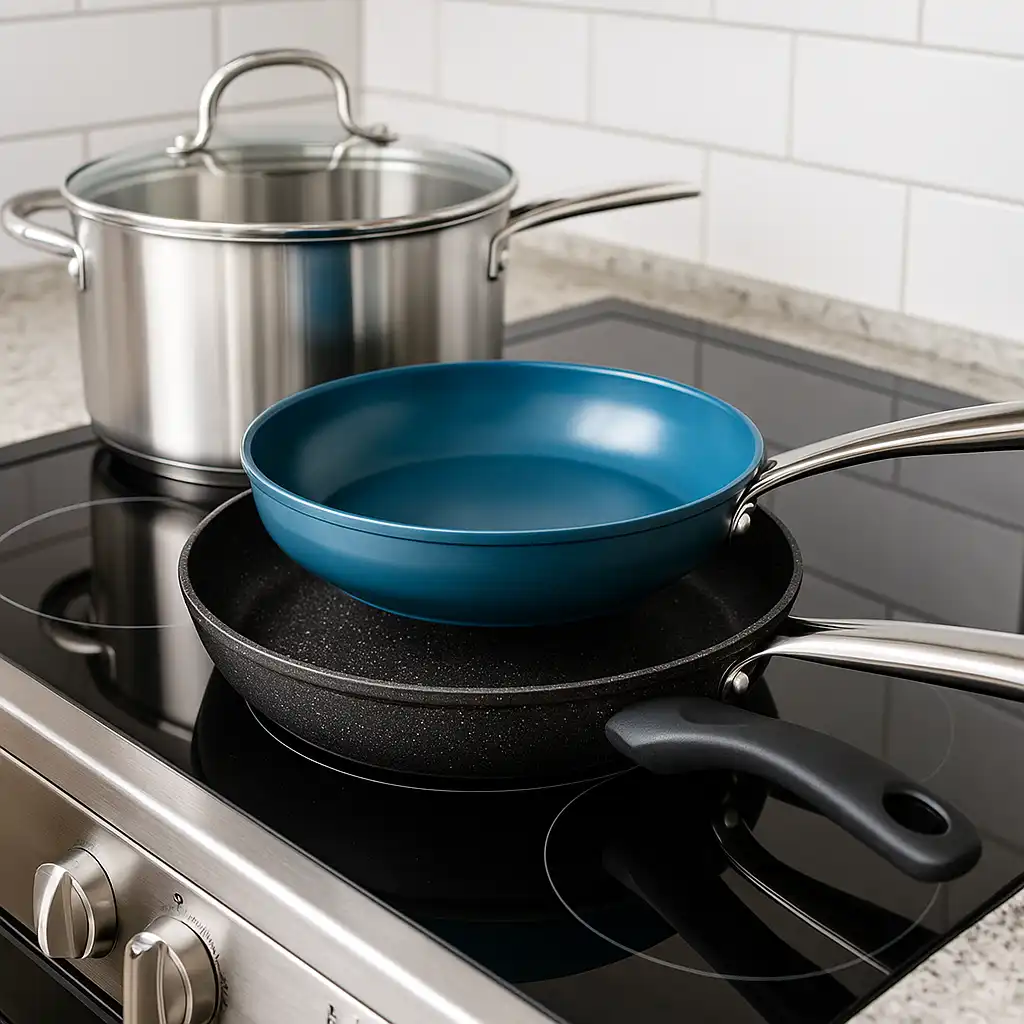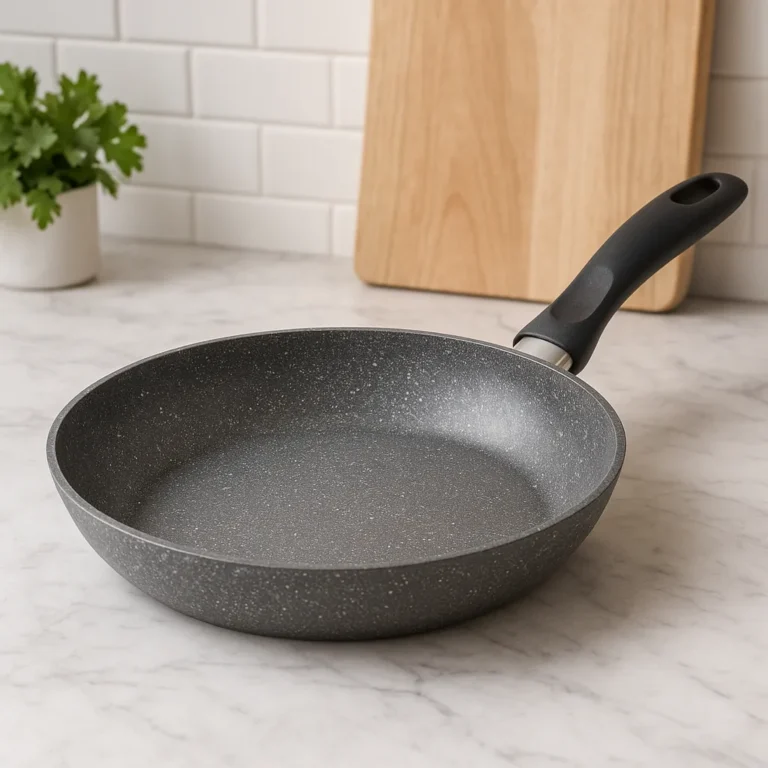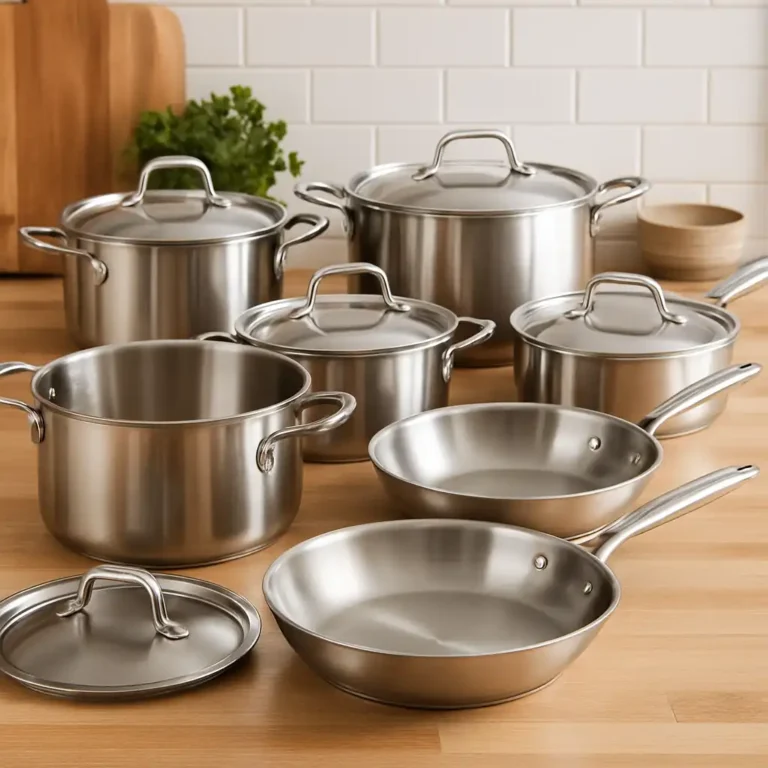Best Cookware for Glass Top Electric Stove: Top Sets That Actually Work
Glass top electric stoves are stylish and easy to clean, but they need the right kind of cookware. If the bottom of your pots and pans isn’t smooth and flat, you could end up with scratches or uneven heating.
Based on user reviews and real-world use, these three cookware sets work exceptionally well with glass cooktops. Whether you’re scrambling eggs before work or making pasta for the family, these picks make cooking easier and more enjoyable.
Flat-Bottom Cookware Keeps Heat Even and Surfaces Safe
Glass stoves heat best when the pan bottoms sit flush against the surface. This also helps protect your stove from damage. All three of these sets—stainless steel, ceramic, and granite-coated—are designed with smooth, flat bases that work well on glass tops.
The Stainless Steel 6-Piece Nonstick Set features a polished, flat bottom for excellent stovetop contact. The Nuwave Duralon Blue Ceramic Set is also induction-ready and won’t scratch your glass surface. And the Kitchen Academy Granite Set stays stable and flat even at high heat, which makes it ideal for searing or stir-frying.
These Sets Hold Up to Everyday Cooking
Durability matters, especially if you cook regularly. All three sets have been praised for handling everyday use without warping or wearing down quickly.
The Stainless Steel Set resists scratches and maintains its shine, especially when used with wooden or silicone utensils. It’s a strong choice if you want longevity.
The Nuwave Ceramic Set includes a diamond-infused coating and is PFAS-free. While ceramic can wear with heavy use, users say this one holds up well with proper care.
The Kitchen Academy Granite Set offers a sturdy multi-layer base that spreads heat evenly and reduces wear from hot spots. It’s a reliable option for big-batch meals and regular stovetop use.
Nonstick Surfaces Make Cooking and Cleanup Easier
All three cookware sets perform well in real-world kitchens where easy cleanup and low-oil cooking are priorities.
The Nuwave Blue Ceramic Cookware stands out for its nonstick performance. Users say eggs, pancakes, and delicate foods slide off effortlessly—and it’s dishwasher-safe too.
The Granite-Coated Kitchen Academy Set is beginner-friendly and doesn’t require much oil. It’s a solid pick for healthier meals without sticking problems.
Even the Stainless Steel Set, while not as slick as ceramic or granite, includes a nonstick coating layer that simplifies cleanup more than older steel cookware.
Space-Saving Design Helps With Storage
If kitchen space is limited, cookware that stacks and stores easily makes a big difference.
The Stainless Steel 6-Piece Set nests compactly and covers essential cooking needs without hogging cabinet space.
The Kitchen Academy Granite Set includes 12 pieces, so it needs more room—but it’s also a full kitchen upgrade in one purchase.
The Nuwave Set offers a nice balance. It doesn’t take up too much space, and it includes thoughtful touches like glass lids and handles that stay cool while cooking.
Check Price & Availability
Want to see current pricing or check out buyer reviews? Use the links below:
View on Amazon – Stainless Steel Nonstick Cookware Set (6-Piece, Induction Compatible)
View on Amazon – Nuwave Healthy Duralon Blue Ceramic Cookware Set (Induction & Oven Safe)
View on Amazon – Kitchen Academy Granite Nonstick Cookware Set (12-Piece)
Conclusion
Cooking on a glass-top stove requires a little extra care when it comes to cookware, but the right set makes all the difference. The Stainless Steel Set is great if you want something simple, sturdy, and space-efficient. The Nuwave Ceramic Set is ideal for low-oil cooking and quick cleanup. The Granite Kitchen Academy Set is perfect for those who want a full, well-rounded set with reliable performance.
Each set has its strengths—just match the features to your cooking habits and kitchen space.






